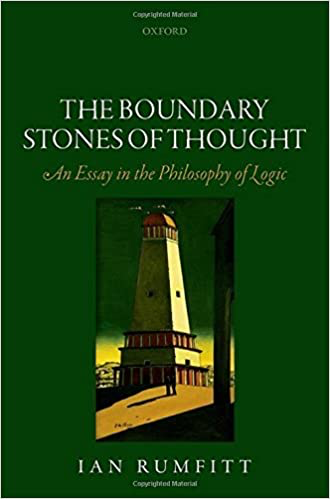Strawson on Truth and Belief: Time to Reciprocate

By Ian Rumfitt

Gareth Evans died three years before I came up to Oxford, so I never met him. Late in his life, however, I got to know Peter Strawson. Most Oxford colleges push fellows out of their rooms as soon as they retire. A grateful former student, though, made substantial annual donations to University College on the understanding that it would give Strawson a room in which to work for as long as he wanted one. From 1998 until 2005, when I was teaching at Univ, I consequently found myself sitting beside him at lunch at least once a week during term. Even though he turned eighty in 1999, Strawson retained to the end an ability to cut to the heart of a philosophical issue. While I was never formally his student, I look back on those lunches as an important part of my education.
There is a great deal one could say about the fascinating discussion preserved on this film. As the ancient rhetoricians recommend, though, I will confine myself to three points.
From the mid-1950s, when he rightly abandoned the so-called ‘performative’ theory proposed in his 1949 Analysis article, Strawson represented himself as he does in the film—viz., as having simply adopted Ramsey’s account of truth. In one respect, though, his account improves on Ramsey’s. As we hear him explain, a belief is true if and only if things are as one who holds that belief thereby believes them to be. For Ramsey, by contrast, a belief is true if and only if it is a belief that things are thus-and-so, and things really are that way. On Ramsey’s account, then, in attributing truth to a belief we assert that it has a propositional content, while on Strawson’s account we presuppose that it does. The difference here is subtle, but it matters in cases where it is doubtful whether the belief has such a content. Those cases, I contend, include certain versions of the Liar Paradox, where Strawson’s account can avoid the revenge problems which bedevil Ramsey’s. (For details, see my essay ‘Truth’, Oxford Studies in the Philosophy of Language, volume 1, 2019.)
An implication of Strawson’s account is that truth (at least in the ‘thin and undifferentiated’ sense) can be predicated of anything which is a belief that P. The belief will be true if P, false if not P. However, even after we have filtered out grammatically declarative sentences which do not express beliefs at all (such as Strawson’s disguised order, ‘The company will parade at 11’), there remain belief states which may not, in the relevant sense, be beliefs that P. Conditionals are an interesting case. Fred can surely believe that Tom will come to the party if Jane does, but what exactly does this belief amount to? A plausible answer is that Fred holds it precisely when he assigns a high value to the probability of Tom’s coming, given that Jane comes; i.e. when he assigns a high value to a certain conditional probability. There are, though, notorious difficulties in identifying any single proposition whose outright probability matches this conditional one, and hence in finding a P such that Fred’s belief is a belief that P. If these difficulties prove insurmountable, Strawson’s account implies that even the thin notion of truth cannot be applied to conditionals. That would seem to me to be the right conclusion to draw, but those determined to resist it might seek to amend the proposed account of truth.
My final point needs more stage-setting. Strawson applies his formula to statements as well as to beliefs: a statement is true if and only if things are as the speaker thereby states them to be. He criticizes Tarski and other ‘systematic semanticists’ for having presented their compositional theories of meaning as definitions of ‘truth-for-English’ &c. There is, he maintains, a notion of truth which applies across different languages, and Ramsey’s definition of that is all we need. Close by, however, lies a fundamental issue which both Evans and Strawson skirt around.
Ramsey was able to present his formula as a definition of truth because he thought he could spell out what it is for someone to believe that Pin terms that nowhere presuppose truth. (He died before completing his theory, which was to have refined the familiar pragmatist idea that to believe that P is to be disposed to act as if P.) Similarly, Strawson thought he could spell out what it is for a speaker to state that P in terms that nowhere presuppose truth. To state that P, he held, is to exploit the conventions of a language in such a way that a hearer will recognize one’s intention to express the belief that P. However, this account of stating that P, which combines Austin’s notion of a conventional speech act with Grice’s insight that communication involves a special kind of audience-directed intention, faces formidable difficulties. It is not too much to say that, in the fifty-odd years since the film was made, we have learned that this account of stating will not work.
In that case, though, what is it to state that P? According to one promising line of thought, stating that Pinvolves, at the very least, producing an utterance which a competent hearer will take to be true if and only if P. But if that is the right constitutive account, then the concept of truth is implicit in the notion of stating that P, and any pretence that Strawson has given a definition of truth as it applies to statements must be abandoned. Rather, the notions of truth, and of stating that such-and-such is the case, are coeval.
This conclusion is not, as such, un-Strawsonian. Strawson’s philosophizing was rarely reductionist, and he was usually content with reciprocating accounts of how basic notions inter-relate. The conclusion, though, undercuts his criticism of the systematic semanticists. They were, after all, trying to spell out the rules, mastery of which enables us to know under what conditions utterances of various forms are true. In so doing, they were contributing to the explication of a notion—that of stating that such-and-such is the case—which Strawson’s account of truth takes for granted. The apparent simplicity of that account, then, is deceptive. What we want in the end is not a pat formula which pretends to ‘define’ truth, but an understanding of the connections between that notion and other philosophically central concepts such as stating, representing, and believing.

About the Author
Ian Rumfitt studied philosophy at Balliol College, Oxford, and Princeton University. He is now a Senior Research Fellow of All Souls College, Oxford.

His publications include The Boundary Stones of Thought (Oxford, 2015, pbk 2017) and more than fifity papers. He is currently at work on a book in the philosophy of language which develops themes from Strawson’s Inaugural Lecture at Oxford, ‘Meaning and Truth’.